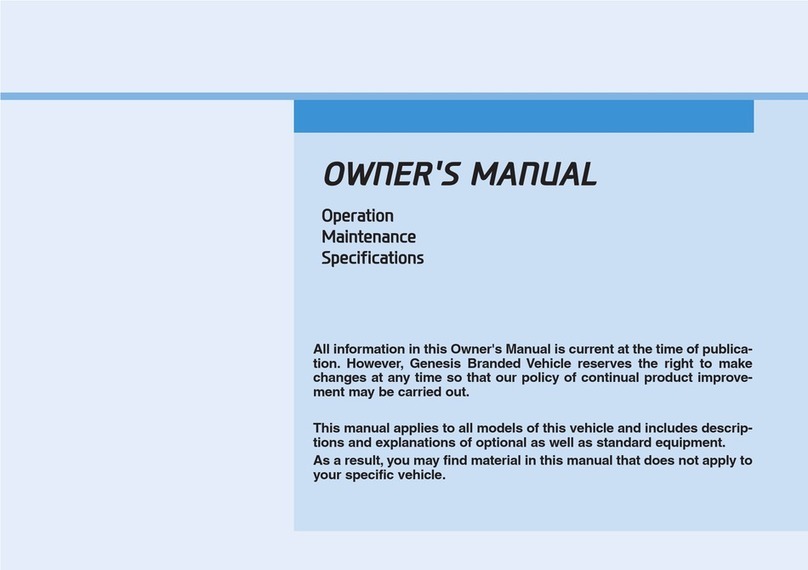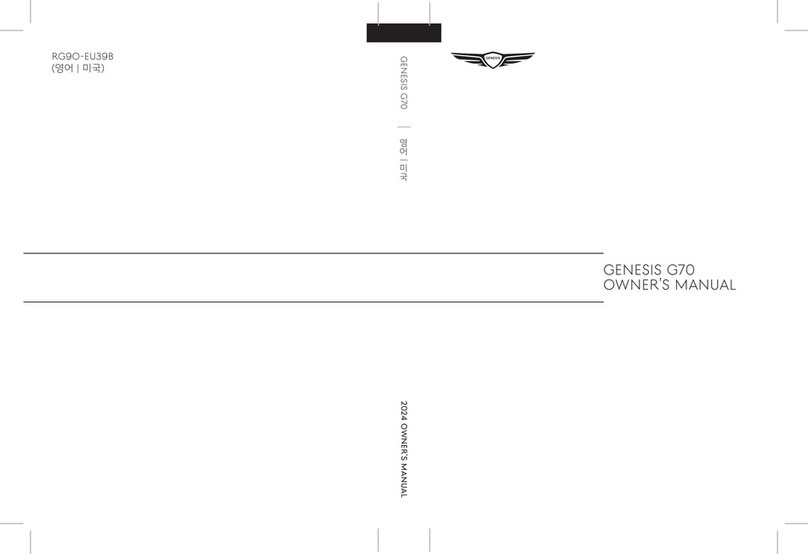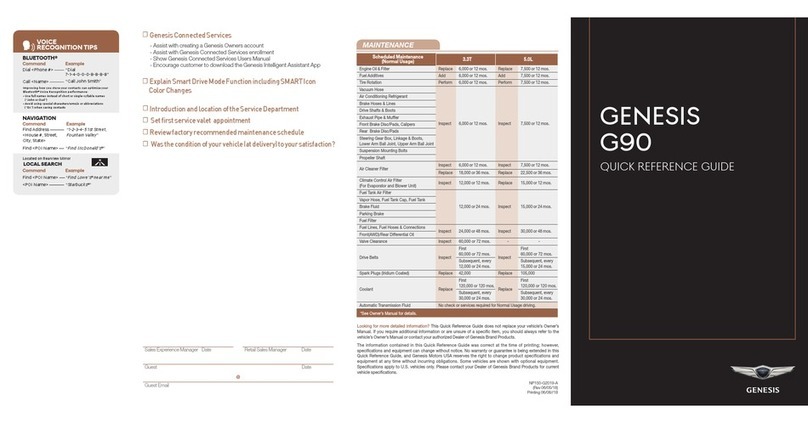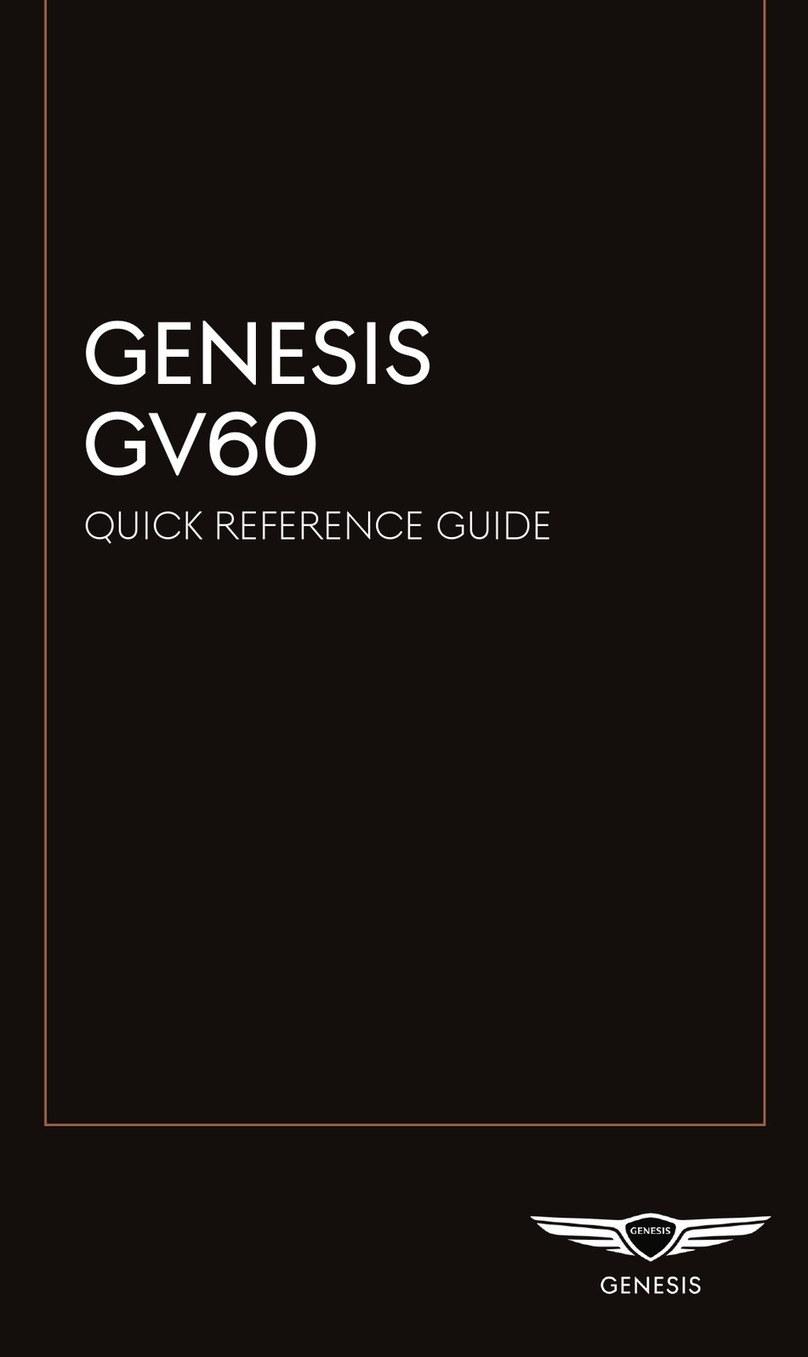
Check the Diagnostic Trouble Codes
GENESIS COUPE(BK) >2010 > G 2.0 DOHC > Automatic Transmission System > Automatic
Transmission System > Troubleshooting
Troubleshootin
Diagnostic Trouble Codes(Inspection Procedure)
1. Turn the ignition switch to OFF.
2. Connect the Hi-scan tool to the DLC connector for diagnosis.
3. Turn the ignition switch to ON.
4. Check the diagnostic trouble codes using the Hi-scan tool.
5. Read the output diagnostic trouble codes. Then follow the remedy procedures according to the "DIAGNOSTIC
TROUBLE CODE DESCRIPTION" on the following pages.
• A maximum of 10 diagnostic trouble codes (in the sequence of occurrence) can be stored in the Random
Access Memory (RAM) incorporated within the control module.
• The same diagnostic trouble code can be stored one time only.
• If the number of stored diagnostic trouble codes or diagnostic trouble patterns exceeds 10, already stored
diagnostic trouble codes will be erased in sequence, beginning with the oldest.
• If the same trouble code does not occur during 40 times continuously, memorized trouble code would be
deleted automatically when the ATF temperature reaches 50°C(122°F).
6. Delete the diagnostic trouble code.
7. Disconnect the Hi-scan tool.
DTC cleaning should only be done with the scan tool.
Inspection Chart For Diagnostic Trouble Codes(DTC)
No. Code Item MIL
1 P0601 Internal Control Module Memory Check Sum Error Ɣ
2 P0641 Sensor Reference Voltage 'A' Circuit/Open Ɣ
3 P0705 Transmission Range Sensor Circuit Malfunction (PRND Input) Ɣ
4 P0711 Transmission Fluid Temperature Sensor 'A' Circuit Range/Performance Ɣ
5 P0712 Transmission Fluid Temperature Sensor 'A' Circuit Low Input Ɣ
6 P0713 Transmission Fluid Temperature Sensor 'A' Circuit High Input Ɣ
7 P0716 Input/Turbine Speed Sensor 'A' Circuit Range/Performance Ɣ
8 P0717 Input/Turbine Speed Sensor 'A' Circuit No Signal Ɣ
9 P0721 Output Speed Sensor Circuit Range/Performance Ɣ
10 P0731 Gear 1 Incorrect Ratio Ɣ
11 P0732 Gear 2 Incorrect Ratio Ɣ
12 P0733 Gear 3 Incorrect Ratio Ɣ
13 P0734 Gear 4 Incorrect Ratio Ɣ
14 P0735 Gear 5 Incorrect Ratio Ɣ
15 P0741 Torque Converter Clutch Circuit Performance or Stuck Off Ɣ



















































